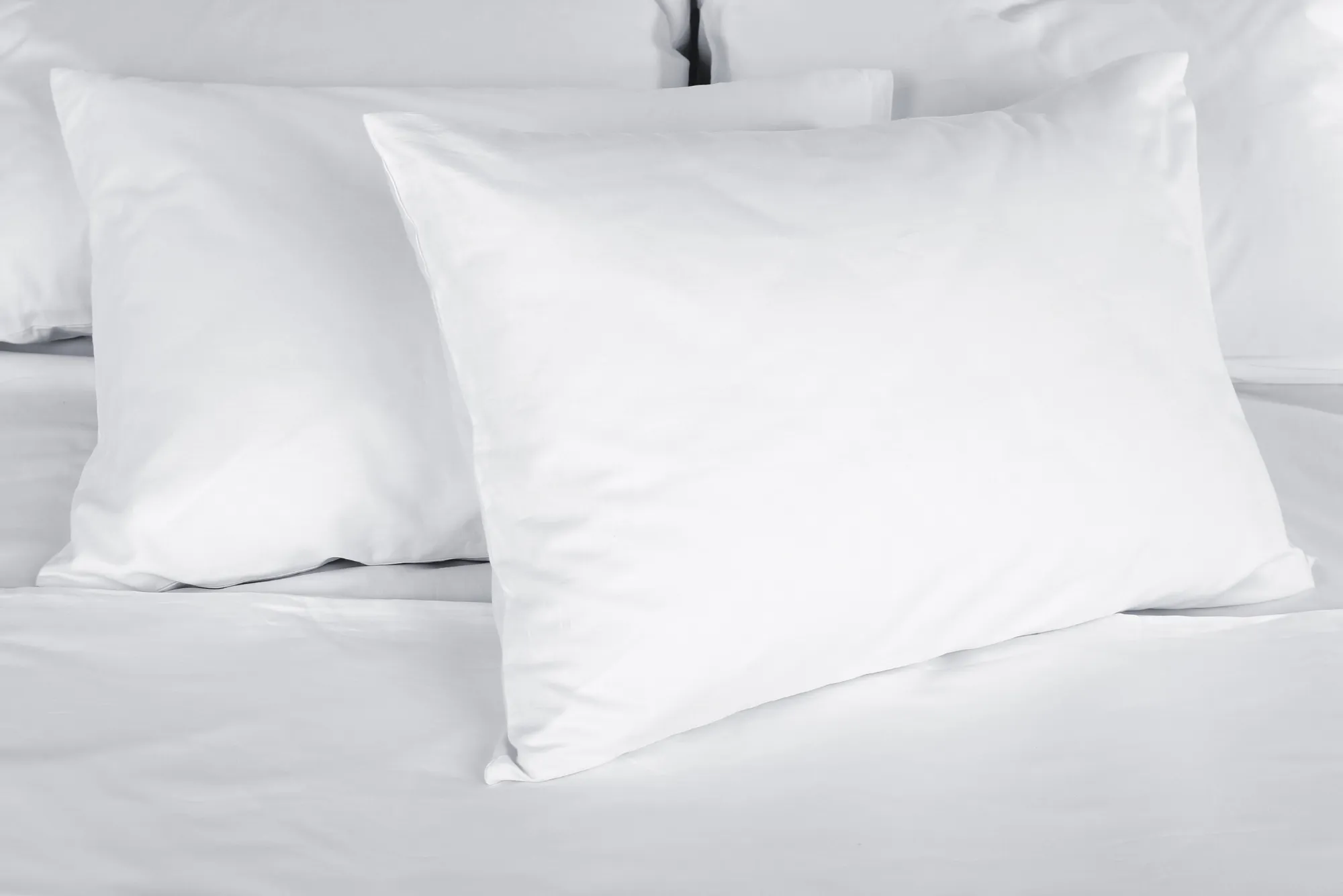In the hospitality industry, guest satisfaction hinges on the smallest details, and high-quality linens play a pivotal role in creating a memorable stay. From crisp sheets to plush towels, bedding sets the tone for comfort and cleanliness. However, linens endure significant wear and tear in hotels due to frequent use and rigorous cleaning processes. This raises a critical question for hoteliers: how often should linens be replaced to maintain quality, hygiene, and cost efficiency?
This comprehensive guide explores the factors influencing linen replacement schedules, offering actionable insights for hotel managers, procurement teams, and owners. By understanding the lifespan of linens, sourcing from reliable bed linen suppliers, and adopting best practices, hotels can ensure guest satisfaction while optimizing operational budgets.
Why Linen Quality Matters in Hotels
Linens are more than just functional items; they are a cornerstone of the guest experience. High-quality bedding enhances comfort, promotes a sense of luxury, and reinforces a hotel’s commitment to hygiene. Conversely, worn-out or stained linens can lead to negative reviews, reduced guest loyalty, and a tarnished brand reputation.
The Guest Perspective
Guests associate fresh, soft, and clean linens with a premium experience. According to a 2023 hospitality survey, 78% of guests cited bedding quality as a key factor influencing their overall satisfaction. Worn or pilled sheets, faded towels, or scratchy blankets can detract from the perception of cleanliness, even in an otherwise spotless room.
The Operational Perspective
From an operational standpoint, linens represent a significant investment. Balancing quality and durability with cost is a challenge for hoteliers. Partnering with reputable bed linen suppliers ensures access to durable, high-quality materials that withstand frequent washing while maintaining their appearance and feel.
Factors Influencing Linen Replacement Frequency
The lifespan of hotel linens depends on several factors, including material quality, usage frequency, washing practices, and maintenance routines. Let’s explore these in detail.
Material and Construction Quality
The durability of linens starts with their material and construction. Common materials for hotel bedding include cotton, cotton-polyester blends, and microfiber. Each has unique properties affecting longevity:
-
Cotton: Known for its softness and breathability, high-thread-count cotton (e.g., Egyptian or Pima) is a premium choice. However, it may wear faster than blends if not properly maintained.
-
Cotton-Polyester Blends: These combine cotton’s comfort with polyester’s durability, making them a popular choice for hotels. Blends often last longer under frequent washing.
-
Microfiber: Synthetic microfiber is highly durable and resistant to pilling, though it may lack the luxurious feel of cotton.
The thread count and weave also matter. A thread count of 200–400 is ideal for hotel bedding, offering a balance of softness and strength. Percale and sateen weaves are common, with percale being more durable due to its tight, grid-like structure.
Working with trusted hotel bedding wholesale providers ensures access to linens designed for commercial use, with reinforced stitching and high-quality materials that extend lifespan.
Frequency of Use
Hotels with high occupancy rates, such as those in tourist hotspots, experience greater linen wear. A single bed sheet may be used by multiple guests in a week, undergoing daily washing. In contrast, boutique hotels with lower turnover may see less frequent use, extending linen life.
On average, a hotel bed sheet endures 100–200 wash cycles before showing signs of wear, such as thinning fabric or frayed hems. Towels may last slightly longer, around 150–250 cycles, depending on quality.
Washing and Maintenance Practices
Commercial laundry processes are harsh, involving high temperatures, strong detergents, and industrial dryers. While necessary for hygiene, these practices accelerate wear. Overuse of bleach or improper drying temperatures can weaken fibers, leading to pilling, fading, or tearing.
To maximize linen lifespan:
-
Use gentle, eco-friendly detergents designed for commercial use.
-
Avoid excessive bleach, opting for oxygen-based alternatives.
-
Follow manufacturer washing guidelines, typically provided by bed linen suppliers.
-
Inspect linens regularly for signs of wear and rotate stock to ensure even usage.
Guest Behavior and Room Type
Guest behavior can impact linen longevity. For example, family-friendly hotels may see more stains from spills or accidents, necessitating earlier replacement. Suites or luxury rooms with premium bedding may require more frequent inspections to maintain a high-end aesthetic.
Recommended Replacement Schedules for Hotel Linens
While there’s no one-size-fits-all answer, industry standards provide a starting point for replacement schedules. These timelines assume high-quality linens, proper care, and moderate to high occupancy.
Bed Sheets
-
Replacement Frequency: Every 12–18 months or 150–200 wash cycles.
-
Signs of Wear: Thinning fabric, pilling, frayed edges, or visible stains that don’t wash out.
-
Best Practice: Maintain a 3:1 inventory ratio (three sets per bed—one in use, one in laundry, one in reserve). Rotate stock to prevent overuse of specific sets.
Pillowcases
-
Replacement Frequency: Every 12–18 months, similar to sheets.
-
Signs of Wear: Yellowing from sweat or oils, thinning fabric, or stretched seams.
-
Best Practice: Choose pillowcases with envelope closures for added durability. Inspect frequently, as pillowcases often show wear before sheets.
Towels
-
Replacement Frequency: Every 18–24 months or 150–250 wash cycles.
-
Signs of Wear: Frayed edges, reduced absorbency, or discoloration.
-
Best Practice: Opt for double-stitched hems and high GSM (grams per square meter) towels for longevity. Avoid overloading washing machines to preserve towel fluffiness.
Duvets and Blankets
-
Replacement Frequency: Every 2–3 years, depending on quality and use.
-
Signs of Wear: Lumps, flattened filling, or worn outer fabric.
-
Best Practice: Use duvet covers to protect inserts and extend their lifespan. Wash covers more frequently than inserts.
Mattress Protectors and Pillows
-
Replacement Frequency: Mattress protectors every 1–2 years; pillows every 1–3 years.
-
Signs of Wear: For protectors, tears or reduced waterproofing; for pillows, loss of shape or support.
-
Best Practice: Invest in high-quality, waterproof protectors and hypoallergenic pillows to enhance guest comfort and durability.
These timelines are guidelines. Hotels in high-traffic areas or with budget constraints may adjust schedules based on visual inspections and guest feedback.
Sourcing Durable Linens from Reliable Suppliers
Choosing the right linens starts with partnering with reputable hotel bedding wholesale providers. High-quality linens reduce replacement frequency, saving costs in the long run. Here’s how to select the best suppliers:
Research Supplier Reputation
Look for bed linen suppliers with a track record of serving the hospitality industry. Check reviews, ask for references, and request samples to assess quality. Established suppliers often provide linens designed for commercial use, with features like reinforced seams and stain-resistant finishes.
Prioritize Durability and Comfort
Balance cost with quality. While budget-friendly linens may seem appealing, they often wear out faster, increasing long-term expenses. Opt for linens with:
-
High thread counts (200–400 for sheets).
-
Durable weaves (e.g., percale for sheets, double-loop for towels).
-
Certifications like OEKO-TEX, ensuring safety and sustainability.
Consider Bulk Purchasing
Hotel bedding wholesale options allow hotels to purchase in bulk, reducing costs per unit. Work with suppliers offering customizable options, such as specific thread counts or sizes, to meet your property’s needs.
Evaluate Supplier Support
Choose suppliers that provide guidance on care and maintenance. Some offer laundry consulting or replacement planning, helping hotels extend linen life and streamline operations.
Cost-Saving Strategies for Linen Management
Replacing linens is a significant expense, but strategic practices can minimize costs without compromising quality.
Implement a Linen Inventory System
Track linen usage and condition with an inventory management system. This helps identify when replacements are needed and prevents overstocking. Software tools or simple spreadsheets can monitor wash cycles and flag items nearing the end of their lifespan.
Train Staff on Proper Handling
Educate housekeeping and laundry staff on best practices for linen care. Proper folding, storage, and washing techniques reduce unnecessary wear. For example, avoiding overloading washers preserves fabric integrity.
Repurpose Worn Linens
Linens that are no longer guest-ready can be repurposed. Frayed sheets can become cleaning rags, and worn towels can be used for spa treatments or poolside areas. This extends the utility of linens and reduces waste.
Negotiate with Suppliers
When sourcing from hotel bedding wholesale providers, negotiate bulk discounts or long-term contracts. Some suppliers offer loyalty programs or seasonal promotions, further reducing costs.
Sustainability in Linen Replacement
Sustainability is increasingly important in hospitality. Eco-conscious guests prefer hotels that prioritize environmental responsibility. Here’s how to make linen replacement sustainable:
-
Choose Eco-Friendly Materials: Opt for organic cotton or recycled polyester blends certified by standards like GOTS (Global Organic Textile Standard).
-
Partner with Sustainable Suppliers: Work with bed linen suppliers committed to ethical production and reduced environmental impact.
-
Recycle Old Linens: Donate usable linens to charities or recycle them through textile recycling programs.
-
Invest in Energy-Efficient Laundry: Use water- and energy-efficient washing machines to reduce the environmental footprint of linen care.
Conclusion: Balancing Quality, Cost, and Guest Satisfaction
Determining how often to replace hotel linens requires a balance of quality, cost, and guest expectations. By investing in durable linens from trusted bed linen suppliers, implementing proper care practices, and monitoring usage, hotels can extend linen lifespan while maintaining a luxurious guest experience. Regular inspections, strategic inventory management, and sustainable practices further optimize costs and align with modern hospitality trends.
For hoteliers, the key is to view linens as an investment in guest satisfaction. By partnering with reliable hotel bedding wholesale providers and adopting a proactive approach to linen management, hotels can ensure every guest enjoys the comfort and cleanliness they expect, fostering loyalty and positive reviews.













